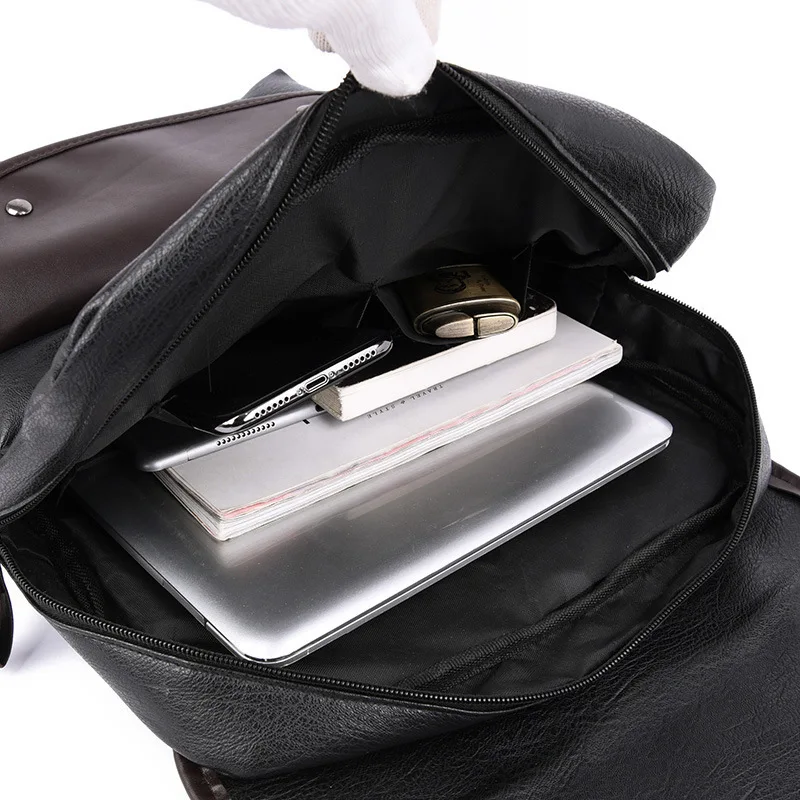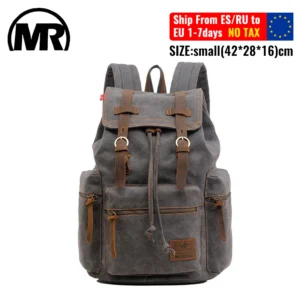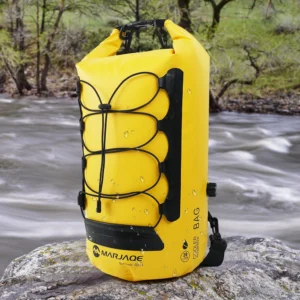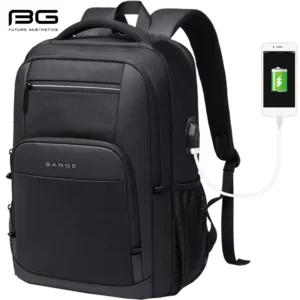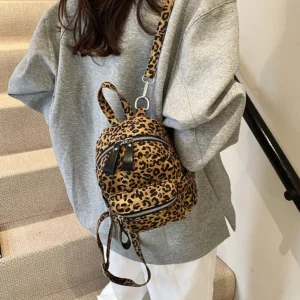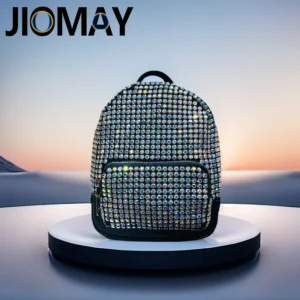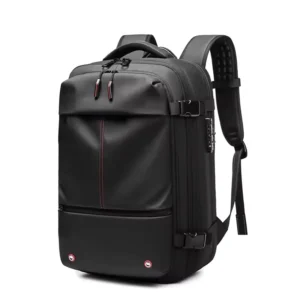What Are Roll-Top Backpacks and How Do They Work?
Roll-top backpacks feature a distinctive design with a flexible upper portion that can be rolled down and secured, creating a simple yet effective closure system. Unlike traditional backpacks with zippers or flaps, these bags allow the user to roll the top opening multiple times and then secure it in place with various fastening mechanisms.
The concept is beautifully straightforward: the flexible upper material folds over itself several times, creating a waterproof seal when properly closed. This rolling technique originated from dry bags used in maritime and outdoor activities where keeping contents completely dry was essential. The design has since evolved into everyday backpacks while maintaining its core waterproofing benefits.
The key components of any roll-top system include a flexible yet sturdy upper material, reinforced edges that provide structure during rolling, and some form of securing mechanism. Various roll-top leather backpack designs showcase different approaches to these elements while maintaining the fundamental rolling principle.
For optimal performance, proper leather conditioning and waterproofing ensures the longevity of these closures, particularly in leather varieties where material care directly impacts functionality.
Key Benefits of Roll-Top Backpack Designs
Roll-top backpacks offer several advantages that have contributed to their growing popularity across different user groups:
Superior Weather Protection: The rolled and sealed top creates multiple barriers against water entry, making these bags exceptionally water-resistant. When properly closed, roll-tops provide significantly better protection from rain and snow compared to traditional zipper designs.
Adjustable Capacity: One of the most practical benefits is the ability to adjust the bag’s volume based on your needs. Carry less, roll more times for a compact profile; carry more, roll fewer times to accommodate extra items. This adjustability typically allows for 20-30% capacity variation.
Enhanced Durability: With fewer mechanical components than zipper bags, roll-tops eliminate one of the most common failure points in backpacks. There’s simply less that can break or malfunction over time.
Simplified Construction: The minimalist design means fewer parts that could potentially fail. This simplicity often translates to lighter weight and greater reliability in challenging conditions.
Distinctive Aesthetic: The unique look of roll-top backpacks creates a distinctive silhouette that stands apart from conventional designs, appealing to those seeking both functionality and visual differentiation.
The weather-resistant roll-top leather backpacks available today demonstrate how these benefits come together to create highly functional everyday carry solutions. As we’ll explore, the specific closure mechanism used can enhance or modify these core benefits.
Traditional Buckle and Strap Closures
Traditional buckle and strap systems remain the most common method for securing roll-top backpacks, offering proven reliability and excellent security. These closures typically consist of side-release buckles (plastic or metal) connected to adjustable webbing straps that secure the rolled portion of the bag.
The mechanism works by creating tension across the rolled section: after rolling the top down multiple times, the user connects the buckle components and adjusts the strap length to achieve proper tension. This pulls the rolled section tight, creating a secure seal against the elements.
Several variations exist within this category:
– Single buckle designs with a strap running across the top
– Double buckle systems that connect to the sides of the backpack
– Side attachment configurations where the roll secures to attachment points on the pack’s sides
– Front-facing buckles that create a flap-like appearance when closed
The hardware quality significantly impacts performance, with premium options utilizing components from respected manufacturers known for durability in outdoor gear.
Pros
- Excellent water resistance when properly tensioned
- Very secure closure that rarely opens accidentally
- Maximum adjustability for varying load sizes
- Durable components that withstand years of use
- Cost-effective and easily replaceable if damaged
Cons
- Slower access compared to other closure types
- Creates noise when opening/closing (the “click”)
- Can add visual bulk to the top of the backpack
- May become difficult to operate in extreme cold or with gloves
Many leather rucksack designs incorporate traditional buckle closures, blending heritage aesthetics with proven functionality. The time-tested nature of this closure system makes it the standard against which other mechanisms are measured.
Magnetic Closure Systems
Magnetic closure systems represent a modern approach to securing roll-top backpacks, prioritizing quick access and sleek aesthetics. These systems utilize powerful magnets embedded within the material of the bag’s opening, allowing the rolled portion to seal securely without mechanical fasteners.
The magnetic closure works through attraction between opposing magnetic elements. After rolling the top down, the user simply brings the magnetic components together, where they automatically align and connect. The strength of the connection depends on the type and quality of magnets used, with premium bags featuring industrial-grade magnetic strips or arrays.
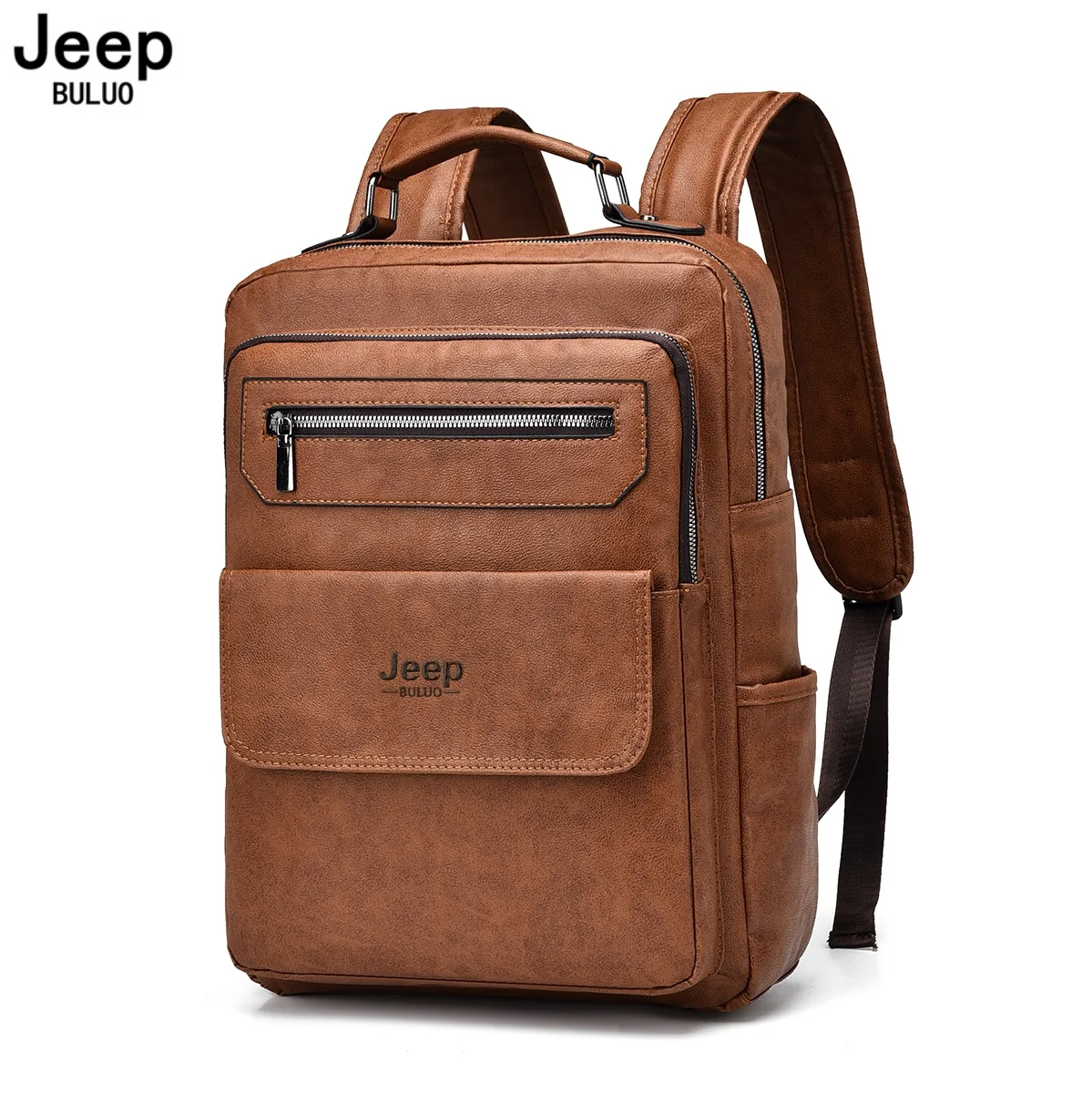
Two main variations exist in magnetic roll-top designs:
– Strip magnets: Long magnetic elements that create a continuous seal across the roll
– Point magnets: Discrete magnetic connection points, often reinforced with additional material
Modern magnetic systems have overcome many early limitations through technological improvements, with some premium options now featuring magnets strong enough to hold significant weight while remaining easy to separate when intended.
Pros
- Lightning-fast access compared to other closure types
- One-handed operation possible in most configurations
- Silent opening and closing (no clicks or sounds)
- Clean, minimalist aesthetic with hidden hardware
- Intuitive use requiring minimal instruction
Cons
- Generally less secure for very heavy loads
- May affect magnetic items stored in the backpack (credit cards, electronic devices)
- Typically more expensive than traditional buckle systems
- Magnetic strength can potentially decrease over extended time periods
- May not provide as much compression capability as strap systems
Magnetic closures excel in urban environments where quick access is prioritized and bags aren’t subjected to extreme conditions or very heavy loads.
G-Hook Closure Mechanisms
G-hook closures feature distinctive metal or plastic hooks shaped like the letter “G” that engage with webbing loops or attachment points to secure the roll-top. This system offers a balance between the security of traditional buckles and the quick access of more modern systems.
The mechanism works through direct mechanical engagement: after rolling the top down, the user hooks the G-shaped fastener through a webbing loop or dedicated attachment point. Tension is maintained through the natural resistance of the properly rolled material combined with the hook’s secure attachment.
G-hooks come in various forms:
– Metal hooks (aluminum, steel, or titanium) for maximum durability
– Injection-molded plastic hooks balancing weight and strength
– Single hook systems for minimalist applications
– Multiple hook configurations for distributing tension across the roll
These closures trace their lineage to tactical and military equipment where secure yet quick-access closures were essential requirements.
Pros
- Technical, streamlined aesthetic with minimal bulk
- Quicker access than buckles but more secure than magnets
- Very lightweight compared to most other closure systems
- Excellent durability, especially with metal hooks
- Good balance of security and accessibility
Cons
- Can be somewhat unintuitive for first-time users
- May require proper alignment to engage correctly
- Possibility of loosening if not tensioned properly
- Smaller contact points may create pressure points on the bag
Many vintage leather backpack designs incorporate G-hook elements for their balance of heritage aesthetics and functional performance. The system particularly excels in applications where weight reduction matters without sacrificing security.
Hook-and-Loop (Velcro) Assisted Closures
Hook-and-loop fasteners, commonly known by the brand name Velcro, offer a unique approach to securing roll-top backpacks. These closures use the familiar interlocking hooks and loops to create initial tension before the rolling process or to supplement other closure systems.
In roll-top applications, hook-and-loop closures typically function in one of two ways:
– Primary closure: Full-width strips that secure the rolled section directly
– Supplementary closure: Hook-and-loop patches that work alongside buckles, G-hooks, or magnetic systems
The most common configuration features strips running along the opening edges that connect before rolling, creating initial compression and alignment. The rolled section then gets secured with a secondary mechanism for complete closure.
Recent innovations have addressed traditional limitations of hook-and-loop systems:
– Sound-dampening versions for tactical applications where noise is a concern
– Higher-grade materials with improved durability and wear resistance
– Water-resistant formulations that maintain effectiveness when damp
Pros
- Very quick and intuitive to use
- Creates a continuous seal across the full width of the opening
- Lightweight addition to closure systems
- Allows precise tension adjustment
- Works well as a supplementary security feature
Cons
- Tends to collect lint, hair, and debris over time
- Loses effectiveness gradually with repeated use
- Less effective when wet or submerged
- Creates distinctive tearing sound when opened
- Generally less durable than mechanical closures
Hook-and-loop systems excel in applications where frequent, quick access is prioritized, or as secondary security measures in hybrid closure designs.
Hybrid and Innovative Closure Systems
As backpack design continues to evolve, manufacturers have developed innovative hybrid systems that combine different closure mechanisms to maximize benefits while minimizing drawbacks. These creative approaches offer unique solutions for specific use cases.
Some notable hybrid and innovative closure approaches include:
Zip-Roll Hybrids: These designs incorporate a waterproof zipper alongside the roll-top closure, allowing quick access to contents without fully opening the roll. The zipper provides convenience while the roll-top maintains weather protection.
Drawstring-Roll Integration: By adding an internal drawstring closure, these systems create a dual-barrier approach. The drawstring gathers the opening first, then the rolling process creates the secondary seal for enhanced security and water resistance.
Quick-Release Systems: Utilizing specialized hardware, these closures allow for instantaneous opening with a simple pull motion while maintaining security during normal use. Popular in cycling and athletic applications where rapid access might be needed.
Auto-Tensioning Mechanisms: These innovative systems use elastic components or specialized hardware that automatically adjusts tension on the roll-top closure, ensuring consistent pressure regardless of load volume.
Proper waterproofing techniques for leather bags become especially important with hybrid systems, as the interaction between multiple closure types can create additional challenges for maintaining water resistance.
Advantages and Limitations
Each hybrid system offers specific advantages for particular use cases:
– Zip-roll hybrids excel for users needing frequent access to specific items
– Drawstring integrations provide enhanced security for travel applications
– Quick-release systems benefit active users in dynamic environments
– Auto-tensioning works well for varying load volumes without readjustment
However, these innovative approaches often come with trade-offs in simplicity, cost, or weight compared to single-system closures.
Evaluating Waterproofing and Weather Resistance
One of the primary advantages of roll-top backpacks is their superior weather protection. However, not all closure systems provide equal levels of water resistance, and proper technique remains essential regardless of mechanism type.
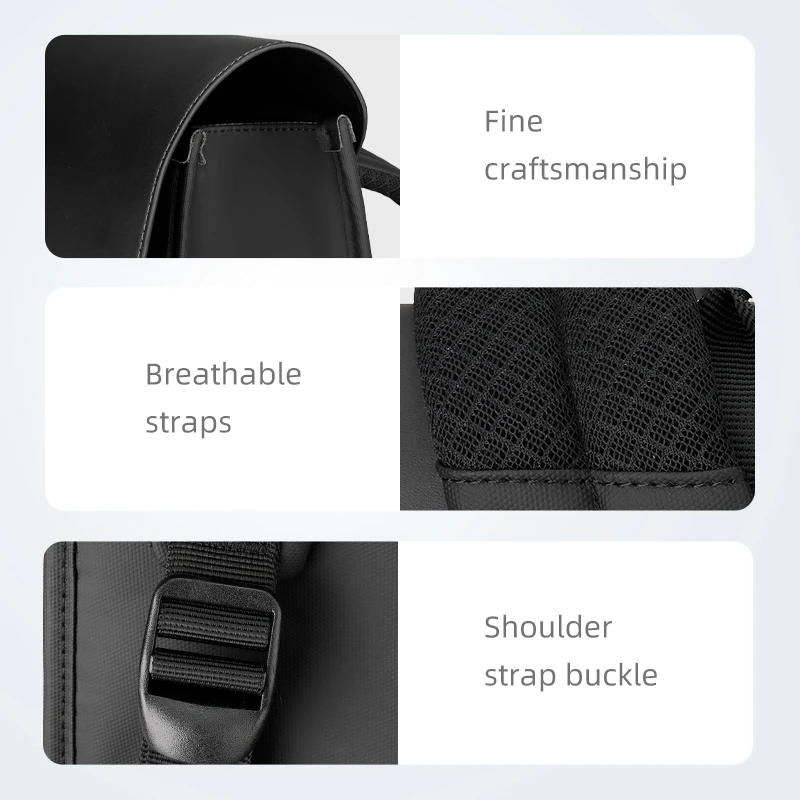
Waterproofing Effectiveness by Closure Type
When evaluating water resistance, consider these general rankings:
1. Traditional Buckle Systems: Excellent when properly tensioned; multiple rolls create redundant barriers against water
2. Magnetic Closures: Very good for light rain; may allow water penetration under submersion or heavy downpour
3. G-Hook Systems: Very good to excellent depending on tensioning ability
4. Hook-and-Loop: Good for light moisture; effectiveness decreases when saturated
5. Hybrid Systems: Varies widely based on specific design and implementation
Beyond water, consider how different closures perform against other environmental challenges:
– Dust and fine particles (important for desert environments)
– Snow and freezing conditions (affecting operational ease)
– High humidity (impacting material performance)
Proper conditioning of leather backpacks is essential for maintaining weather resistance, particularly with natural materials that require periodic treatment to maintain their water-repellent properties.
Proper Rolling Technique
Regardless of closure type, correct rolling technique significantly impacts waterproofing effectiveness:
– Minimum of 3-4 complete rolls for water resistance
– Tight, even rolling without creases or gaps
– Proper tension when securing the closure mechanism
– Regular inspection for material wear at fold points
Security Features Across Closure Types
Beyond keeping contents dry, roll-top closures vary significantly in how well they secure your belongings against theft, tampering, or accidental opening during activity.
Security Comparison
| Closure Type | Theft Resistance | Accidental Opening Resistance | Tamper Evidence |
|---|---|---|---|
| Traditional Buckle | High | Very High | Moderate |
| Magnetic | Low to Moderate | Moderate | Low |
| G-Hook | Moderate | High | Moderate |
| Hook-and-Loop | Low | Moderate | Low |
| Hybrid Systems | Varies | Varies | Varies |
Additional security features often complement closure systems:
– Tensioning straps that restrict access when secured
– Secondary internal closures (drawstrings, zippers)
– Integration with anti-theft hardware or lockable components
– Hidden compartments accessible only when roll-top is fully opened
Understanding how roll-top leather backpacks work can help users maximize security through proper use of these features. The key security consideration remains the fundamental trade-off: more secure closures typically require more time and effort to access.
Access Speed and Convenience Comparison
The ease and speed of accessing your belongings varies dramatically across different roll-top closure types. This factor often becomes the deciding point for users who frequently need to retrieve items throughout the day.
Access Speed Rankings
From fastest to slowest access:
1. Magnetic Closures: Nearly instantaneous, often possible one-handed (1-2 seconds)
2. Hook-and-Loop: Quick release with distinctive sound (2-3 seconds)
3. G-Hook Systems: Moderately quick with some practice (3-5 seconds)
4. Traditional Buckles: Requires two hands and multiple steps (5-10 seconds)
5. Complex Hybrid Systems: Varies widely depending on design
Several factors affect real-world accessibility:
– Weather conditions (cold temperatures, rain)
– Wearing gloves or mittens
– Available hands (holding other items)
– Movement (walking, biking, standing still)
– Visibility conditions
The learning curve also varies significantly between systems. Magnetic closures require almost no instruction, while some G-hook configurations may need demonstration for efficient use. Traditional buckles are generally intuitive but slower to operate.
Volume Adjustability and Load Management
One of the defining benefits of roll-top designs is their ability to adapt to varying load sizes. However, different closure systems affect this adjustability in important ways.
Expansion Capability
Traditional buckle systems typically offer the greatest range of volume adjustment, as their straps can be lengthened significantly to accommodate larger loads. The number of rolls decreases as content volume increases, with a minimum of 2-3 rolls needed for weather protection.
Magnetic systems generally provide moderate adjustability, limited primarily by the strength of the magnetic connection under increased tension. As the bag expands, pressure on the magnetic closure increases, potentially compromising security.
G-hooks offer good adjustability within their designed range but may have fixed attachment points that limit maximum expansion. The location of attachment points significantly impacts how the load distributes when the bag is full.
Load Distribution Effects
The closure system directly affects how pressure distributes across the top of the bag:
– Buckle systems with side attachments pull tension to the sides, creating even pressure
– Top-mounted closures concentrate pressure at attachment points
– Magnetic strips distribute force evenly across their length
– G-hooks create focused tension at connection points
Large leather backpacks with well-designed roll-tops demonstrate how proper closure systems can maintain stability even as capacity fluctuates between minimum and maximum loads.
Durability and Maintenance Considerations
The longevity of your roll-top backpack depends significantly on the durability of its closure system and proper maintenance over time.
Component Lifespan
Different components have varying expected lifespans:
– Metal buckles: Typically last the lifetime of the backpack with minimal care
– Plastic side-release buckles: 3-7 years of regular use before potential failure
– Webbing straps: 5+ years with gradual UV degradation if frequently exposed to sunlight
– Magnetic elements: Generally very durable with potential gradual weakening
– G-hooks: Nearly indefinite lifespan for metal versions; 3-5 years for plastic
– Hook-and-loop: Progressive degradation with 1-3 years of optimal performance
Common Failure Points
Each system has typical areas where problems first develop:
– Buckle systems: Attachment points to the bag body; plastic buckle teeth wearing or breaking
– Magnetic closures: Magnets separating from fabric backing; edge wear at fold points
– G-hooks: Webbing loop fraying; hook bending (rare with quality metal)
– Hook-and-loop: Progressive clogging with debris; adhesive backing separation
Maintenance Recommendations
Simple maintenance can dramatically extend closure system lifespan:
– Periodic cleaning of all components, especially after exposure to salt water or mud
– Inspection of stitching at attachment points
– Lubrication of metal components if squeaking or stiffness develops
– Proper DIY leather care for travel backpacks including appropriate conditioners for leather components
For systems showing wear, many components can be replaced before the entire bag needs replacement—particularly buckles, straps, and some hook-and-loop elements.
Aesthetic Impact of Different Closures
Beyond pure functionality, closure systems significantly influence a backpack’s overall visual identity and style category.
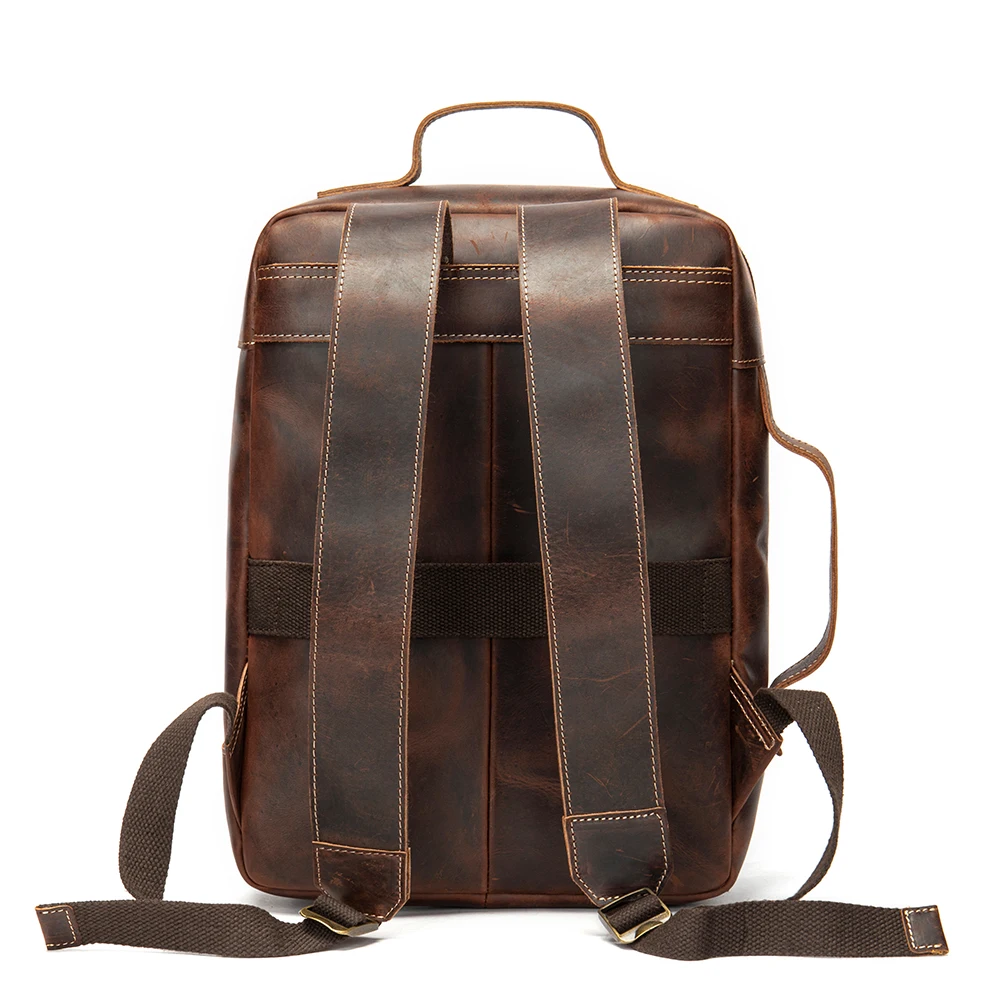
Style Influence by Closure Type
Traditional Buckle Systems typically create a classic, heritage-inspired aesthetic. Metal hardware with leather straps evokes outdoor tradition and craftsmanship. These closures appear substantial and visually reinforce perceptions of durability and reliability.
Magnetic Closures project a modern, minimalist, and often urban aesthetic. With their hidden hardware and clean lines, these systems appeal to design-conscious users seeking contemporary styling. The reduced visual complexity creates a sleeker overall appearance.
G-Hook Systems create a technical, utilitarian look often associated with tactical or specialized gear. The visible hardware elements suggest functionality and purpose-driven design. This style particularly appeals to those valuing performance-oriented aesthetics.
Hook-and-Loop creates a casual, approachable appearance with less formal structure. The softness of the material affects the bag’s overall visual weight and formality level.
Color and material choices for closure components further influence style perception, with designer leather backpacks often featuring hardware colors and finishes carefully selected to complement the leather tones.
Matching Closure Types to Your Needs: Use Case Guide
Selecting the ideal roll-top closure depends significantly on how and where you’ll use your backpack. Consider these recommendations for common scenarios:
Urban Commuting
For daily city use, prioritize:
– Quick access for frequent retrievals
– Professional appearance if in office settings
– Security in crowded environments
– Weather protection for electronics
Best options: Magnetic closures or well-designed G-hooks offer the ideal balance of speed and security for urban environments. Traditional buckles work well for more formal leather designs when appearance matters more than access speed.
Outdoor Adventure
For hiking, camping, or water activities, focus on:
– Maximum weather protection in unpredictable conditions
– Secure closure that won’t open during activity
– Durability against environmental stresses
– Compatibility with gloves in cold conditions
Best options: Traditional buckle systems typically excel in outdoor settings, particularly those with redundant security and strong tensioning capabilities. G-hooks are excellent lightweight alternatives for backpackers concerned about weight.
Travel Applications
For traveling, consider:
– Security against theft in unfamiliar locations
– Adaptability to varying load sizes as souvenirs accumulate
– Durability across different environments
– Quick access for passports and essentials
Best options: Traditional buckles or secure G-hook systems provide the best theft deterrence. Leather travel backpacks with well-designed roll-tops offer excellent versatility for varying travel needs.
Digital Nomad/Professional Use
For carrying technology and work essentials:
– Protection for valuable electronics
– Professional appearance
– Easy access during meetings or work sessions
– Organized compartments that remain accessible
Best options: Magnetic or hybrid closures provide quick access during workdays, while maintaining a clean professional appearance. Look for systems that allow partial opening without completely undoing the main closure.
14 Inch Leather Laptop Backpack, Brown Leather Backpack, Men's Leather Backpack, Vintage Leather Backpack
Price range: $177.28 through $199.12 Select options This product has multiple variants. The options may be chosen on the product pageCarry On Leather Backpack, Roll Top Leather Backpack
Price range: $77.76 through $96.48 Select options This product has multiple variants. The options may be chosen on the product pageDesigner Men's Backpack, Men's Leather Laptop Backpack, Men's Leather Work Backpack
Price range: $158.04 through $160.04 Select options This product has multiple variants. The options may be chosen on the product pageDesigner Mini Backpack, Mini Leather Backpack, Small Leather Sling Backpack, Women's Leather Backpack
Price range: $95.76 through $98.80 Select options This product has multiple variants. The options may be chosen on the product pageDesigner Mini Backpack, Designer Women's Backpack, Mini Leather Backpack, Women's Leather Backpack
Price range: $135.92 through $137.64 Select options This product has multiple variants. The options may be chosen on the product page17 Inch Leather Laptop Backpack, Men's Leather Travel Backpack, Men's Leather Work Backpack
Price range: $106.28 through $143.88 Select options This product has multiple variants. The options may be chosen on the product page
Photography and Specialized Equipment
For carrying cameras or specialized gear:
– Quick access to capture fleeting moments
– Maximum protection for sensitive equipment
– Customizable compartmentalization
– Silent operation when needed
Best options: Hybrid systems with side-access zippers complement the roll-top design, or magnetic systems for silent, quick operation. The roll-top provides weather protection while additional access points enable reaching equipment quickly.
How to Properly Use and Maintain Your Roll-Top Closure
Regardless of which closure system you choose, proper technique and maintenance will maximize performance and longevity.
Perfect Rolling Technique
For optimal weather resistance:
1. Empty excess air from the bag before closing
2. Fold the top edges inward slightly to create a clean starting edge
3. Make the first roll tight and even across the entire width
4. Continue rolling 3-4 times minimum (more for extreme conditions)
5. Keep tension even across the entire rolled section
6. Secure closure mechanism with appropriate tension
Maintenance Best Practices
Simple maintenance steps to preserve closure functionality:
– Clean buckles and hardware with mild soap and water if visibly dirty
– Remove debris from hook-and-loop fasteners using a fine comb
– Inspect webbing for fraying or UV damage annually
– Check stitching at attachment points regularly
– Apply leather conditioner to leather straps when they become dry
– Rinse all components after exposure to salt water
– Allow complete drying before storage if bag becomes wet
Troubleshooting Common Issues
- Loose closure: Check for stretched webbing or worn buckle components
- Difficult buckling: Inspect for bent hardware or debris in mechanism
- Weak magnetic connection: Ensure proper alignment; check for damaged magnets
- Water leakage: Verify sufficient number of rolls and even tension
- G-hook slippage: Check for webbing loop stretching or hook deformation
Are Roll-Top Closures Always Better Than Zippers?
While roll-top designs offer significant advantages, they aren’t universally superior to traditional zipper closures. Understanding the comparative strengths helps determine which system best suits your needs.
When Roll-Tops Excel
Roll-top closures clearly outperform zippers in several scenarios:
– Environments with frequent precipitation or water exposure
– Situations requiring variable capacity adjustment
– When long-term durability is the primary concern
– For dusty or sandy conditions where zippers may jam
– When a distinctive aesthetic is desired
When Zippers Might Be Preferable
Zippers remain advantageous in certain applications:
– When frequent, rapid access to the main compartment is essential
– For complex organizational systems requiring multiple compartments
– When precise, small openings are needed for security
– In situations where one-handed operation is consistently required
– When the bag’s appearance needs to match formal business environments
Many features of roll-top backpacks can be combined with supplementary zippered compartments to create versatile designs that leverage the strengths of both closure types. This hybrid approach often provides the best balance for users with diverse needs.
The right choice ultimately depends on your specific priorities—weather protection, access speed, durability, or aesthetics—and which factors matter most for your typical use cases.

